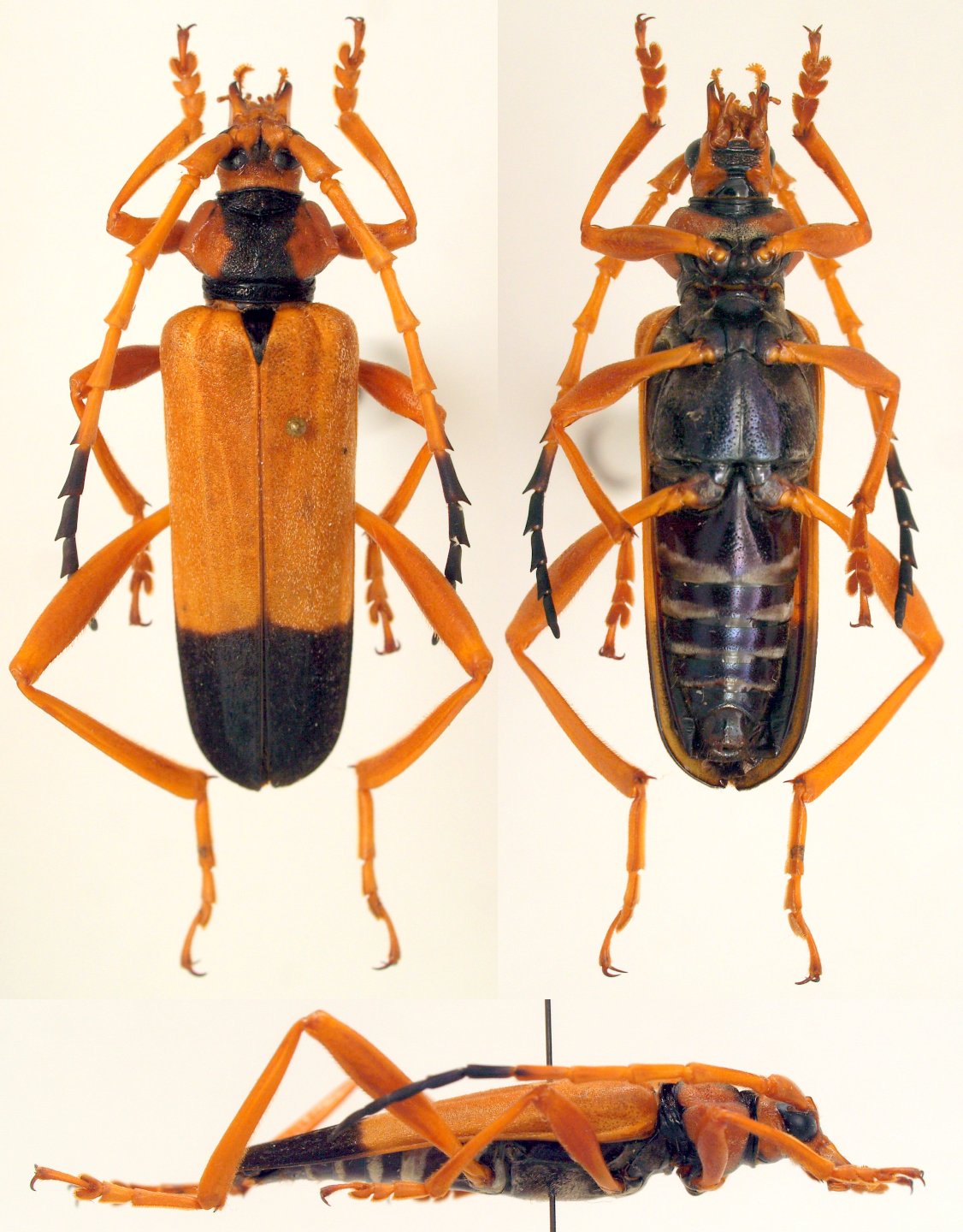| Author |
 Topic Topic  |
|
|
Gerard
Scientific Collaborator
    
France
5300 Posts |
 Posted - 22/08/2015 : 12:40:01 Posted - 22/08/2015 : 12:40:01



|

243.14 KB
MALAISIE, Borneo, Mt Bawang, Kalimantan, taille 39 mm
Schmidtiana apicalis (Poll, 1889) mâle |
Edited by - Capitaine on 30/01/2016 15:11:37 |
|
|
cerambyphil
Member Rosalia
  
France
675 Posts |
 Posted - 29/12/2019 : 13:01:29 Posted - 29/12/2019 : 13:01:29



|
| Now it is Schmidtiana ochracea apicalis (Van de poll, 1889) male |
 |
|
|
dryobius
Member Rosenbergia
   
USA
1887 Posts |
 Posted - 29/12/2019 : 14:35:27 Posted - 29/12/2019 : 14:35:27



|
| Can you cite the paper? I have suspected this was the case for many years. |
 |
|
|
Capitaine
Scientific Collaborator
   
France
1841 Posts |
 Posted - 29/12/2019 : 15:17:11 Posted - 29/12/2019 : 15:17:11



|
| "Le genre Schmidtiana Podany,1971: considérations sur la structure des genitalia des mâles, revalidation, nouvelles synonymies et nouvelles distributions" Joan Bentanachs & Eric Jiroux (Magellanes N°35) |
Claude |
 |
|
|
dryobius
Member Rosenbergia
   
USA
1887 Posts |
 Posted - 29/12/2019 : 15:34:08 Posted - 29/12/2019 : 15:34:08



|
| Thanks. So it was just published. |
 |
|
|
Francesco
Forum Admin
    
Luxembourg
9456 Posts |
 Posted - 30/12/2019 : 10:14:41 Posted - 30/12/2019 : 10:14:41




|
quote:
Originally posted by cerambyphil
Now it is Schmidtiana ochracea apicalis (Van de poll, 1889) male
I do not understand: both species were described from Borneo.
What is their actual distribution?
What is the destiny of Schmidtiana apicalis cameronensis (Hayashi, 1987)? |
 |
|
|
cerambyphil
Member Rosalia
  
France
675 Posts |
 Posted - 30/12/2019 : 11:06:13 Posted - 30/12/2019 : 11:06:13



|
Schmidtiana apicalis cameronensis was synonymized with S. ochracea apicalis.
Many simplifications in this article due to the study of the genitalia. |
 |
|
|
Francesco
Forum Admin
    
Luxembourg
9456 Posts |
 Posted - 30/12/2019 : 17:52:57 Posted - 30/12/2019 : 17:52:57




|
Even with the article under my eyes, I am not convinced: both subspecies are present in Sarawak and Sabah. |
 |
|
|
dryobius
Member Rosenbergia
   
USA
1887 Posts |
 Posted - 31/12/2019 : 14:27:34 Posted - 31/12/2019 : 14:27:34



|
My colleagues, Eric and Joan, should have requested more information, or photographs of specimens in other collections before publishing this article.
For instance I have a specimen from Sabah with just a small amount of black at the apex of the elytra. So there are clearly intergrades between S. o. ochracea and S. o. apicalis. I don't think it is always necessary to dissect genitalia to prove something that appears to me to be quite obvious. Out of several dozens specimens I have seen from Sabah, nearly all are without black on the elytral apices. For whatever strange reason, the females of Parandrocephalus eversor (much rarer) also are either unicolorous of with black apex in the same area as Schmidtiana ochracea.
More curious than this example are Aegolipton p. pustuliferum and A. p. lineatigranulum which where both described by Komiya in 2005 from localities very close to each other in Sabah.
|
 |
|
| |
 Topic Topic  |
|


